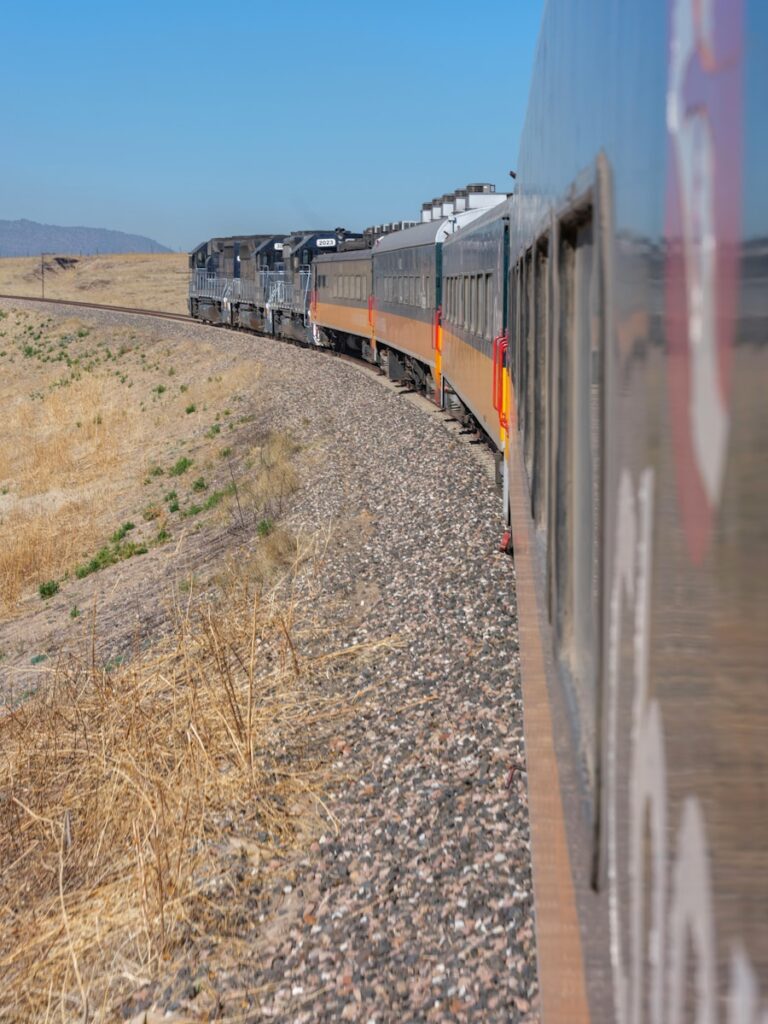Long-distance eating
On the train, breakfast in the morning; lunch at noon; dinner in the evening. The food wasn’t too bad. That was also an experience. With a roomette ticket, you don’t have to pay for meals because it’s already included in the ticket. You only have to pay for tips. For passengers with seat tickets who want to eat, they have to pay an average of $15 for breakfast; lunch and dinner cost over $20. All of them have menus to choose from, and everyone has to tip the servers – a custom in American restaurants as well as with taxis (except Uber) and other services like nail salons.

In the morning, just go to the car called the Dining Car to have a meal. You have to sit down at the table, and then the server will come to take your order; then you just sit there and wait for them to bring it to you (just like in a restaurant). You don’t need to go to the counter to ask or carry anything yourself like on the French TGV train.
Around noon, at 11 o’clock, a dining car attendant came to the room to ask: what time would you like to eat, 12 o’clock, 12:30, or 1:30? (Our trip did not include dinner.) Surely to have a table to sit down and eat properly without having to wait.
Speaking of food, let me add: because we traveled in first class, which is more expensive than regular tickets, while waiting for our train, we got to relax in the VIP lounge of the Chicago central station. There, there are drinks like Coca Cola, Sprite, bottled water, as well as snacks like peanuts, raisins, and candies. Of course, there are dining tables and armchairs along with large-screen TVs.
Lunch on the train, simple food but quite tasty.
It’s my first time taking a train in the US, so I’m a bit nervous. In the waiting room, we asked a staff member about the schedule and how to board the train. This person replied, “You two don’t worry, there won’t be any problem, we won’t leave you here!”
That’s exactly right. Fifteen minutes before the train departs, that attendant announces the departure time over the loudspeaker. Five minutes before the train departed, this person continued to announce that it was almost time to board the train and that anyone needing a ride to the train should leave the room immediately; the car was already parked and waiting. Due to having a lot of luggage, we chose to take the car. It was a small vehicle, similar to a golf cart, that took about 2 minutes on the platform to reach the train car with private rooms. After settling in for about 3 or 4 minutes, the train started moving. Quite punctual.
However, when I went online to learn more about Amtrak trains, some people said that these trains are often late. The reason: They have to share tracks with freight trains, and those tracks are owned by freight train companies, so they don’t get priority. (Different from the high-speed passenger trains in Europe and the Shinkansen in Japan.)
That’s true. The train departed on time, but it ran late. On the way, there were times when our train had to stop for several minutes to let a freight train pass. Again, we encountered issues with this trip, having to stop and change trains in Albany, 2 hours and 30 minutes by rail from New York, due to a train derailing near New York. So we were delayed by another 2 hours!
In general, it takes time when using the train. Our Chicago-New York journey took more than 20 hours. If we took a plane, it would only take about 2 hours and 30 minutes; including travel time, waiting, and check-in at the airport, it would only be around 6 hours. In the U.S., flying is faster and more punctual, and the tickets are not much more expensive than train tickets. Buying tickets in advance online makes them even cheaper.




